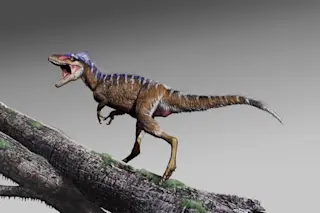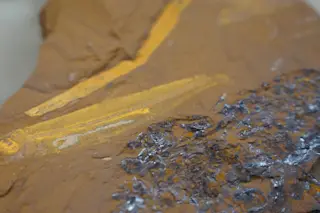cientists have discovered a new species of tiny tyrannosaur that lived some 95 million years ago in what’s now Utah. The find helps fill a frustrating gap in the fossil record at a critical time when tyrannosaurs were evolving from small, speedy hunters, into the bone-crushing apex predators we know so well.
The new dinosaur has been dubbed Moros intrepidus, and its name means “harbinger of doom.” The creature, known only from a leg bone and some various teeth, weighed under 200 pounds as a fully-grown adult. It was a specialist predator and scientists say it was fast enough to easily run down prey while avoiding other meat-eaters.
Their discovery was published Thursday in the journal Nature Communications Biology.
Tyrannosaurus rex was one of the most terrifying creatures to ever live. Few larger predators have walked the Earth. But tyrannosaurs – a group including T. rex and dozens of relatives ...














